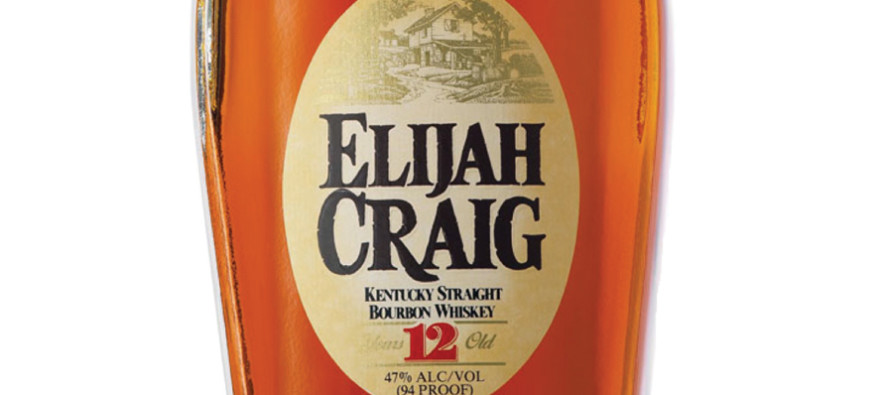One Bourbon, One Scotch and One Beer: The Gateway

Welcome to my new George Thorogood-inspired column, where instead of drinking alone/by ourselves, we will discuss various issues facing consumers and producers in the booze industry today. Quality over quantity is our mantra and the format will be loosely based on my three favorite types of alcohol: bourbon, scotch, and beer. As this column is a gateway for me to have a new way to think and talk about spirits, my first theme will be the gateway itself.
When I say gateway, I’m talking about products that can help usher consumers of alcohol out of comfortable, basic, marketing-based purchasing decisions into realms of more quality and variety of flavor. It’s not as simple as this = bad and that = good; It’s a balance of what product deserves your hard-earned dollar and how good of an experience it is going to provide.
Now, admittedly some people, like the character in Thorogood’s song, drink to numb their interior pain. This is not the kind of drinking we’re talking about and alcohol should not be used as a medicine. If you or someone you know is experiencing this issue, I encourage you to seek help from outside the liquor industry. We’re looking for quality over quantity, even if it costs a bit more, and we’re looking to give our money to a company who has earned it by making a quality product, not bought it with marketing and name recognition. Let’s talk about how to do that.
We’ll start with beer. If you watched television from seven to 10 pm last night, you could be forgiven for thinking there are only six or seven different beers to choose from. Go to the liquor store and you will see there are dozens of brands of beer that don’t have money in their budget for television advertising. Instead of using “the most interesting man in the world” or a limo full of babes having an absurdly good time, these smaller brands communicate with attractive packaging, and ultimately, the quality of what’s in their can or bottle. Brands without big advertising budgets don’t have the opportunity to remind you about their product everywhere you turn (TV, sporting events, billboards, magazine and newspaper ads) so they have to rely on the quality of their product to grow their reputation and keep customers coming back.
So what beer brands keep me coming back? Our neighbors in Colorado have a booming craft beer scene, with breweries and brewpubs in nearly every city. Two of my favorites are Great Divide and Odell. Both companies present themselves with attractive, distinctive packaging, offer creative and seasonal beers alongside their yearlong offerings, and rarely miss when they try something new and different. The Friek from Odell is a tart Belgian-style ale brewed with cherries. It is sweet and effervescent, almost like a sparkling white wine, but loaded with cherries. Their flagship IPA is the gold standard of American India Pale Ales, it is hoppy, floral, full-bodied, and delicious. Great Divide’s Yeti series of Russian Imperial Stouts is a rotating menu of chocolate, espresso, and oak aged stouts that are wonderfully thick, bold, and warming treats for the colder months.
I also like to drink local and Belgian beers. The Belgians have been making beer for hundreds of years, and in that time they have figured out a thing or two about how to make a delicious beer. Delerium Tremens and Petrus are both life changers in terms of flavor and value. We have several breweries here in Nebraska that have not been up to the task quite as long, but have been churning out some pretty promising results, and it’s fun to keep tabs on what they are up to. Zip Line, Lucky Bucket, and Nebraska Brewing Co. all make a variety of quality beers that are available at many bars and liquor stores.
So are you “up for anything?” Then how about making a decision to try something new, craft, or local? The cost is typically the same, or slightly higher, for a glass in a bar or a six pack at the shop, and the experience of giving your palate something new and different to chew on is well worth the extra money. Trying something completely random can be fun but when in doubt, ask your bartender or shopkeeper what they like. More times than not they will have experience and opinions that can help you make a good decision.
Bourbon is a similar story. There are so many more options appearing on the shelf that it can be overwhelming. But people want to branch out. Sure, Jack and Cokes will do the job, but all that sugar masks the flavor of the booze you’re drinking. People are starting to realize that when made well, this stuff is good and can be enjoyed on its own or with a couple cubes of ice.
Bulleit is a brand that makes a bourbon and a rye that has seen its popularity soar over the past five years. It has very attractive, distinctive packaging and is marketed as a “small batch” product. This term is both ubiquitous and meaningless in the whiskey industry today. It literally has no legal definition, and make no mistake; the batches being churned out at the Bulleit distillery that straddles the Kentucky-Indiana border are about as large as they come. It’s important not to become too swayed by this kind of marketing when searching for a quality product. Jim Beam, for example, recently released their Jim Beam Small Batch and Signature Craft editions despite the existence of their very successful small batch collection (Knob Creek, Basil Hayden’s, Baker’s, Booker’s). When I asked why the need for another series of whiskies under this moniker, a representative of Jim Beam’s answer was simple. To capitalize on the obsession with “craft” and “small batch” products to consumers who don’t associate the already-existing small batch collection with Jim Beam.
Age statements are perhaps a better indicator of quality, but they are becoming more rare as the demand for bourbon (and whisky in general) increases globally and the old stocks continue to dry up. Elijah Craig 12 year old is probably my favorite bourbon for the money. It is made at Heaven Hill distillery, one of Kentucky’s biggest and oldest producers of bourbon and it usually can be had for about $27.
The other side of this coin is the rise in true “craft” distillers. These are smaller, independent companies whose products sell more on a basis that they are truly small batch and handmade, often with hand-numbered labels, and no marketing at all. While attractive, my experience with the majority of these products has been overwhelmingly negative. I won’t name names in this case but the products I’ve tried tend to be spirity, thin, and young. I don’t know if it’s the massive difference is resources between the smaller companies and the giant distillers that causes the gap in quality to be so large, but they certainly have not caught up yet in that respect. Don’t pay extra for something that looks and claims to be super-authentic and expect that your extra money will equal extra quality.
I’m almost out of room for this issue so I’ll just mention one quick note about scotch to hopefully get you thinking on your quest for quality drinking. Age statements, as I said, can be an indicator of maturity and quality, but they can also be misleading. Many more high quality scotches are being released without an age statement simply because there isn’t enough older whisky to guarantee that every drop is at least 10, 12 or 15 years old, so they mix in some younger whisky. Some of these can be quite good while something that’s much older might carry a very steep price tag that its juice cannot live up to, so, buyers beware.
Until next time, good luck on your journey.
Related Articles
Let’s Drink Sake Everyone!
I imagine a lot of you clods are mostly familiar with sake as that stuff you drop into your beer
The Dumpster: Salad Barred
When I order a cheeseburger, the waiter asks me how I want it. With cheese? What kind? Onion, lettuce, and
The Dumpster: Knowing your hash from a hole in the ground
If the big bomb hits tomorrow or ISIS hackers succeed in melting down our power grid, I’ll be happy living
No comments
Write a commentOnly registered users can comment.














